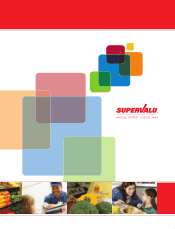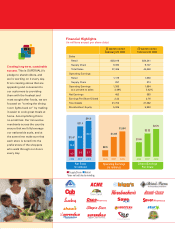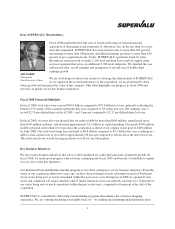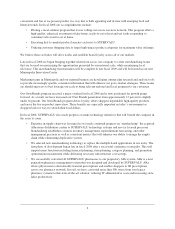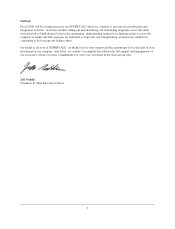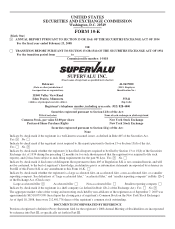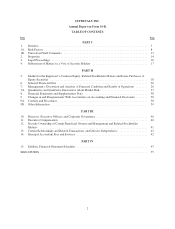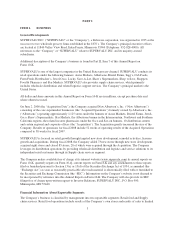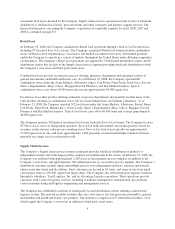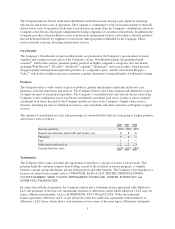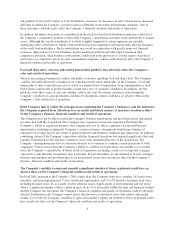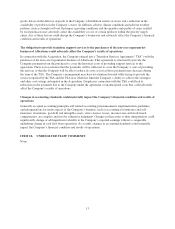Albertsons 2008 Annual Report Download - page 10
Download and view the complete annual report
Please find page 10 of the 2008 Albertsons annual report below. You can navigate through the pages in the report by either clicking on the pages listed below, or by using the keyword search tool below to find specific information within the annual report.assortment food stores licensed by the Company. Supply chain services operations include results of wholesale
distribution to affiliated food stores, mass merchants and other customers and logistics support services. The
financial information concerning the Company’s operations by reportable segment for fiscal 2008, 2007 and
2006 is contained on page F-6.
Retail Food
At February 23, 2008, the Company conducted its Retail food operations through a total of 2,474 retail stores,
including 873 licensed Save-A-Lot stores. The Company’s principal Retail food formats include combination
stores (defined as food and pharmacy), food stores and limited assortment food stores. Its branded positions
enable the Company to operate in a variety of markets throughout the United States under differing competitive
circumstances. The Company’s Retail food operations are supplied by 23 dedicated distribution centers and 10
distribution centers that are part of the Supply chain services segment providing wholesale distribution to both
the Company’s own stores and third-party retail stores.
Combination stores provide an extensive grocery offering, pharmacy department and expanded sections of
general merchandise and health and beauty care. As of February 23, 2008, the Company operated 891
combination stores under the Acme Markets, Albertsons, bigg’s, Cub Foods, Farm Fresh, Jewel-Osco, Sav-on,
Shaw’s Supermarkets, Shop ‘n Save, Shoppers Food & Pharmacy and Star Markets banners. Typical
combination stores carry about 50,000 items and average approximately 60,000 square feet.
Food stores focus their product offerings primarily on grocery departments and generally include many of the
same product offerings as combination stores, but on a more limited basis and without a pharmacy. As of
February 23, 2008, the Company operated 392 food stores under the Acme Markets, Albertsons, Bristol Farms,
Cub Foods, Farm Fresh, Hornbacher’s, Jewel, Lucky, Shaw’s Supermarkets, Shop ‘n Save, Shoppers Food &
Pharmacy and Star Markets banners. Typical food stores carry about 40,000 items and average approximately
40,000 square feet.
The Company operates 318 limited assortment food stores under the Save-A-Lot banner. The Company licenses
873 Save-A-Lot stores to independent operators. Save-A-Lot holds the number one market position, based on
revenues, in the extreme value grocery-retailing sector. Save-A-Lot food stores typically are approximately
15,000 square feet in size, and stock approximately 1,400 primarily custom-branded high-volume food items
generally in a single size for each product sold.
Supply Chain Services
The Company’s Supply chain services business primarily provides wholesale distribution of products to
independent retailers and is the largest public company food wholesaler in the nation. At February 23, 2008, the
Company was affiliated with approximately 2,200 stores as their primary grocery supplier, in addition to the
Company’s own stores, and approximately 500 additional stores as a secondary grocery supplier. The Company’s
distribution customers include single and multiple grocery store independent operators, regional and national
chains, mass merchants and the military. Such customers are located in 49 states, and range in size from small
convenience stores to 200,000 square foot supercenters. The Company also offers third-party logistics solutions
through its subsidiary, Total Logistics, Inc. and its Advantage Logistics operations. These operations provide
customers with a suite of logistics services, including warehouse management, transportation, procurement,
contract manufacturing and logistics engineering and management services.
The Company has established a network of strategically located distribution centers utilizing a multi-tiered
logistics system. The network includes facilities that carry slow turn or fast turn groceries, perishables, general
merchandise and health and beauty care products. The network is comprised of 23 distribution facilities, 10 of
which supply the Company’s own stores in addition to third-party retail stores.
4

